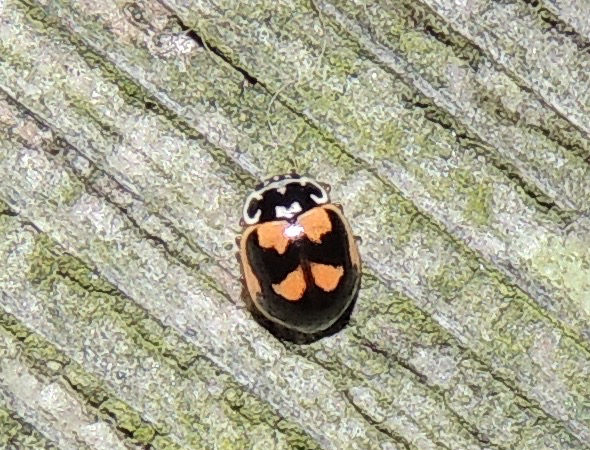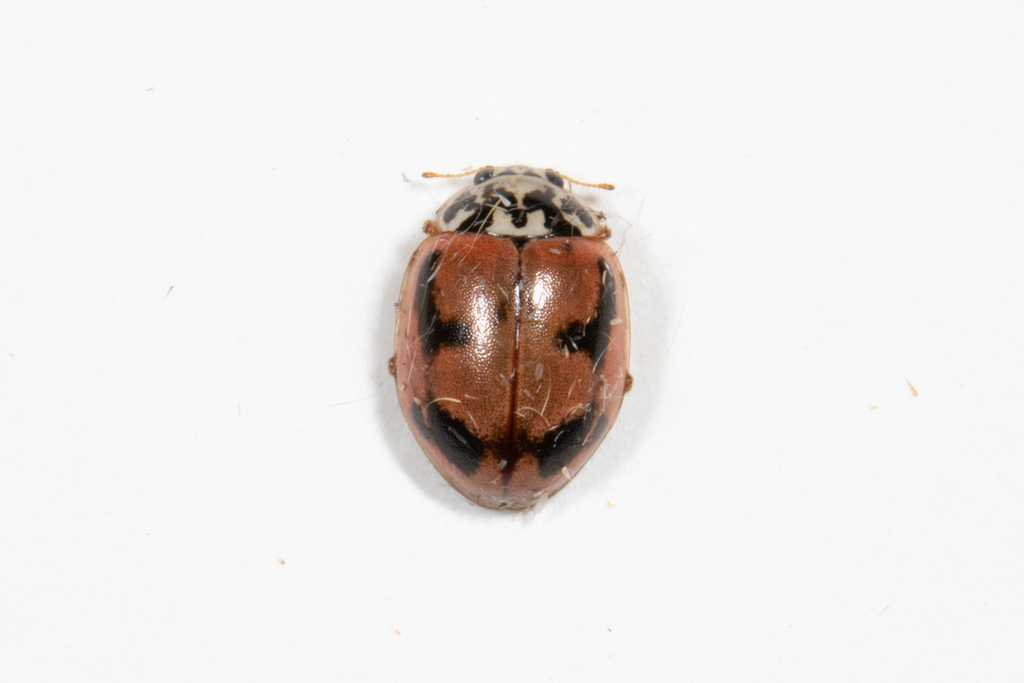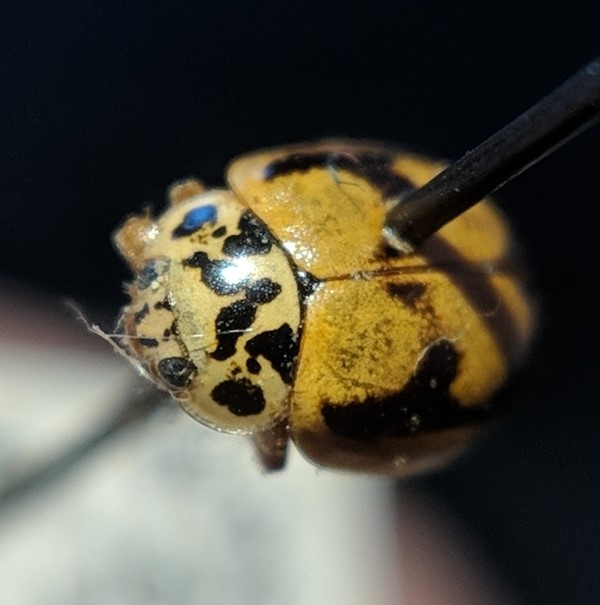
Painted Lady Beetle © Rob Curtis
The Painted Lady Beetle is native to North American boreal forests. It’s primarily found in the northwest, however scattered records of it exist in the northeast as well. It feeds primarily on aphids and adelgids.
Status
Native
Ranked as Apparently Secure in New Brunswick, Ontario, Saskatchewan, Alberta, and Yukon; and Secure in British Columbia.
Last Seen
2021
Fun Fact
The Painted Lady Beetle is reliably identified by the patterns on its underside, since its wing color patterns are extremely variable.
Identification
The Painted Lady Beetle is between 3.3 and 5.3 mm in length.
- Head: Mostly pale yellowish, with a black margin along the top that protrudes into the pale patch. Has a black diamond-shaped outline marking in between the eyes, which connects to the black margin.
- Pronotum: Pale yellowish o white overall. There is a complete or interrupted “M” shape of black spots on the pronotum. There are irregularly-shaped black spots on either side of the “M” as well, occasionally connected to it. Pronotum markings can be thick and pronounced or weak and spotty.
- Elytra: Pale (whitish) to vibrant orange in color. There are typically solid brown to black markings across the elytra, resembling two “W” shapes, which connect. The suture is often black in color. The outer margin of the elytra is sometimes black. Painted Lady Beetles may also have no black markings on their elytra at all.
- Legs: Orange in color.
- The beetle’s underside has very unique markings (reference Bug Guide photos).
- Often confused with: Twenty-spotted Lady Beetle, Hudsonian Lady Beetle.
Habitat
In or near boreal forests, primarily older mixed coniferous forests. One study predominantly found Painted Lady Beetles on Pine Trees. Painted Lady Beetles seem to have a preference for pines and other conifers.
General Range
Used to be found widely across North America, now primarily concentrated in boreal forests in the western United States. Distribution in the east is patchy.
Food
Conifer aphids (Cinara sp.) and Balsam Twig Aphids (Mindarus abietinus). Likely eats other aphids and scale insects as well.
Life History
Painted Lady Beetles can have two generations per year. Eggs are laid in mid-May and in mid-July. They are deposited on needles of trees infested with conifer aphids (Cinara sp.). Pupation occurs in fissures in the bark.
More Information
You can find more information about Painted Lady Beetles using the following links:
Vermont Distribution
Visit the iNaturalist Observation Map and Occurrence Records to find out where Painted Lady Beetles have been seen in Vermont.








